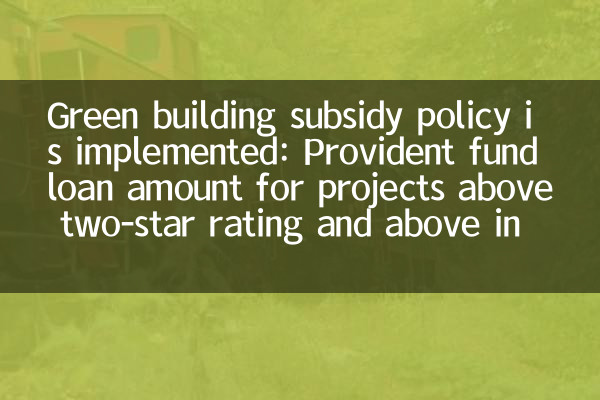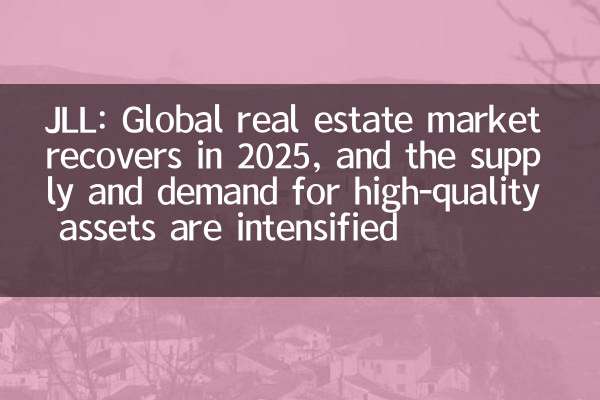Green building subsidy policy is implemented: Provident fund loan amount for projects above two-star rating and above increases by 15%
Recently, the Ministry of Housing and Urban-Rural Development, jointly with multiple departments, issued a major policy, clearly providing preferential support for green building projects with the increase in provident fund loan amount. According to the policy regulations, the provident fund loan amount for home buyers of green building projects with two-star rating and above can increase by 15%. This move aims to promote the development of green buildings, help achieve the "dual carbon" goal, and at the same time reduce economic pressure on home buyers.
Policy background and significance

As global climate change problems become increasingly severe, green buildings have become an important development direction for the construction industry. my country has clearly put forward the goal of "carbon peak before 2030 and carbon neutrality before 2060". Green buildings, as an important area of energy conservation and emission reduction, naturally become the focus of policy support. The implementation of the policy of increasing the provident fund loan amount is not only an incentive for green buildings, but also a direct benefit to home buyers.
Main content of the policy
According to the policy documents, the following are the specific implementation details:
| Green building grade | Provident fund loan amount increase ratio | Applicable objects |
|---|---|---|
| Two-star rating | 10% | New or renovated residential and public buildings |
| Three Stars | 15% | New or renovated residential and public buildings |
In addition, the policy also stipulates that home buyers who apply for provident fund loans must provide green building certification documents, and the increase in the loan amount shall not be used for home purchase expenses for non-green building parts.
Market reaction and industry impact
After the policy was released, the real estate market and construction industry responded enthusiastically. Many real estate companies said they will accelerate the development and certification of green building projects to meet market demand. The following are the recent updates of some real estate companies:
| Real estate company name | Number of green building projects (2023) | Planned new projects (2024) |
|---|---|---|
| Vanke | 25 | 40 |
| Country Garden | 18 pcs | 30 |
| Poly Development | 15 | 25 |
At the same time, home buyers have significantly increased their attention to green buildings. According to data from a real estate platform, after the policy was released, the number of searches related to green buildings increased by 120% month-on-month and the number of consultations increased by 80%.
Expert interpretation and future prospects
Industry experts believe that this policy is an important step in the promotion of green building, but there are still supporting measures to follow up in the future. Li Ming, senior engineer at the China Academy of Building Sciences, said: "The increase in the provident fund loan amount can directly reduce the cost of buying a house, but the long-term value of green buildings needs to be reflected through energy saving and living comfort." He suggested that subsidy standards can be further refined in the future to cover more green building technology applications.
Looking ahead, with the maturity of green building technology and the continuous increase in policies, green buildings are expected to become the mainstream choice in the real estate market. Relevant departments also stated that they will gradually introduce more incentive policies, including tax incentives, land supply tilt, etc., to comprehensively promote the development of green buildings.
Conclusion
The implementation of the green building subsidy policy marks another solid step in the fields of energy conservation, emission reduction and sustainable development. The 15% discount on the surplus of provident fund loan amount not only reduces the burden on home buyers, but also points out the direction of green transformation for the real estate industry. Driven by the dual driving of policies and markets, the popularity of green buildings will be accelerated and contribute to the realization of the "dual carbon" goal.

check the details

check the details